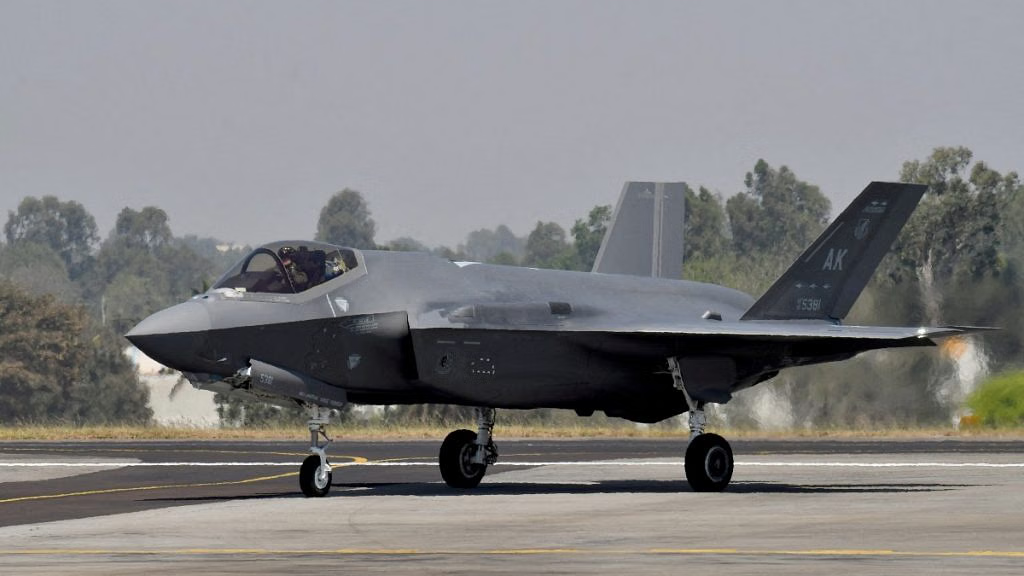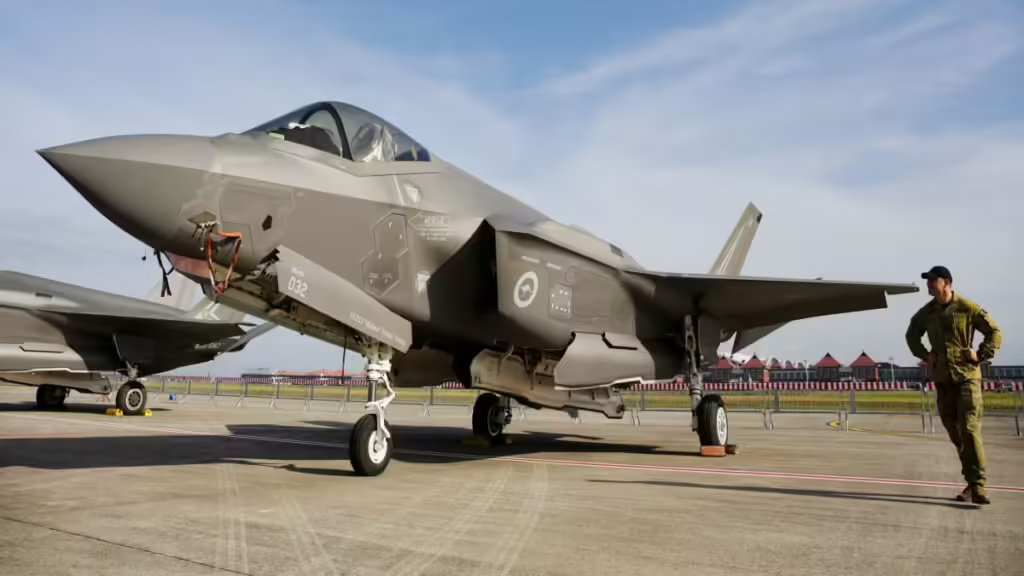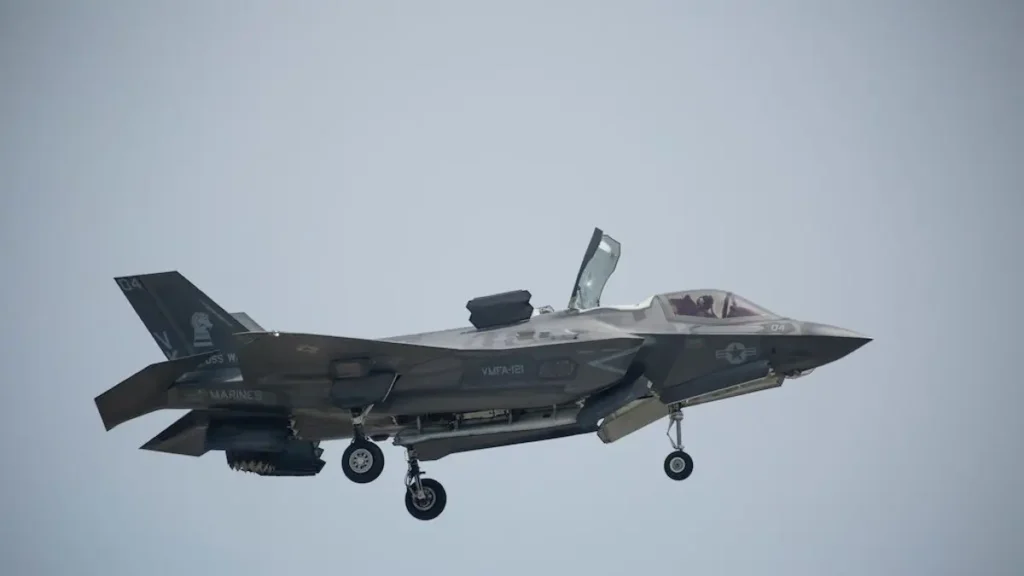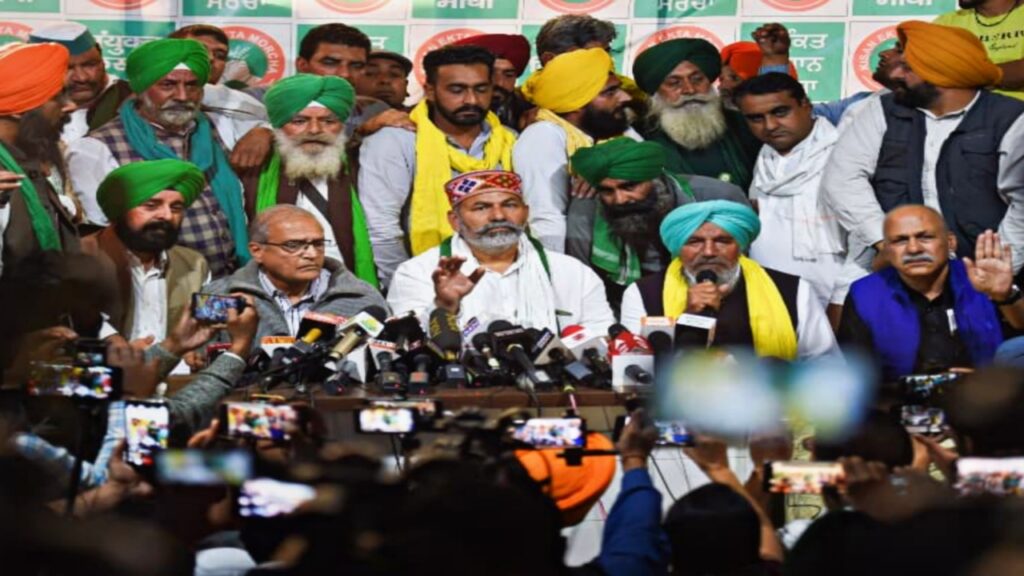India rejects F-35 offer from the US.
Reiterating its commitment to self-reliance in defense manufacture under Prime Minister Narendra Modi’s “Make-in-India” policy, India rejects the United States’ offer of the F-35. The Indian government rejected the plan to purchase American F-35 fighter jets, according to a Bloomberg report, preferring to focus on developing domestic production capacity and technology alliances that assist homegrown defense industries.
PM Modi is steadfast in his goal of bolstering India’s own aerospace and defense industries while reducing reliance on foreign military imports. Rejecting the F-35 deal is in accordance with the Make-in-India mission’s overarching strategic objectives, which include turning India into a major base for global manufacturing.

A Bloomberg article claims that India has turned down the US’s offer to purchase F-35 stealth fighter fighters. This offer was made by US President Donald Trump during Prime Minister Narendra Modi’s February 2025 visit to the White House. staying committed to PM Modi’s ‘Make-in-India’ defence strategy, reports Bloomberg.
In line with its “Make In India” strategy, the study claims that India would prefer to collaborate with the US to develop and produce defense equipment domestically.
Background:
- Trade relations between the US and India are currently contentious.
- Trump abruptly said that starting on August 7, Indian imports would be subject to a 25% additional fee.
- Indian officials were taken aback by this announcement.

India’s Strategy:
- The South Asian country will not immediately retaliate, according to the article, but rather intends to purchase more goods from the US, such as:
- The Significance of Natural Gas Gold Communication Equipment
- America’s strategy to counterbalance China’s increasing military might in Asia included the F-35 aircraft.
- These are high-tech, extremely costly warplanes.
- Trump’s assertion that he assisted in averting a May conflict between India and Pakistan has exacerbated the situation, according to Indian leaders.
Bottomline
India is refusing to purchase American fighter jets, opting instead to produce its own defense gear while attempting to maintain cordial commercial relations with the United States in spite of recent tensions.
India has reportedly declined an offer from the United States to acquire F-35 fighter jets, as stated in a recent Bloomberg report. This decision reflects New Delhi’s steadfast dedication to Prime Minister Narendra Modi’s ‘Make-in-India’ initiative, particularly in the crucial defence sector.
The F-35, created by Lockheed Martin, is regarded as one of the most sophisticated stealth fighters globally. Its attributes include stealth technology, advanced avionics, and next-generation combat capabilities. While the acquisition could have significantly enhanced India’s air power, officials in New Delhi feel that depending on foreign-built systems—especially those with stringent operational conditions—does not align with India’s long-term defence objectives.

Instead, India is focusing on the development and production of indigenous defence technologies. This encompasses the Tejas light combat aircraft, the AMCA (Advanced Medium Combat Aircraft), and collaborations with both domestic and international companies to manufacture military equipment within the nation. The aim is not only to decrease reliance on foreign suppliers but also to stimulate domestic manufacturing, create jobs, and enhance technological self-sufficiency.
Experts believe that this decision is also influenced by geopolitical factors. India seeks to maintain strategic independence in its defence policies and avoid becoming overly dependent on a single nation’s technological framework.
By turning down the F-35, India is conveying a powerful message about its defence priorities. Rather than solely acquiring advanced systems from abroad, the emphasis is on enhancing capabilities within the nation. As global tensions escalate and defence requirements grow, India’s ‘Make-in-India’ approach aims to ensure both military strength and economic progress through home-grown innovation and production.





